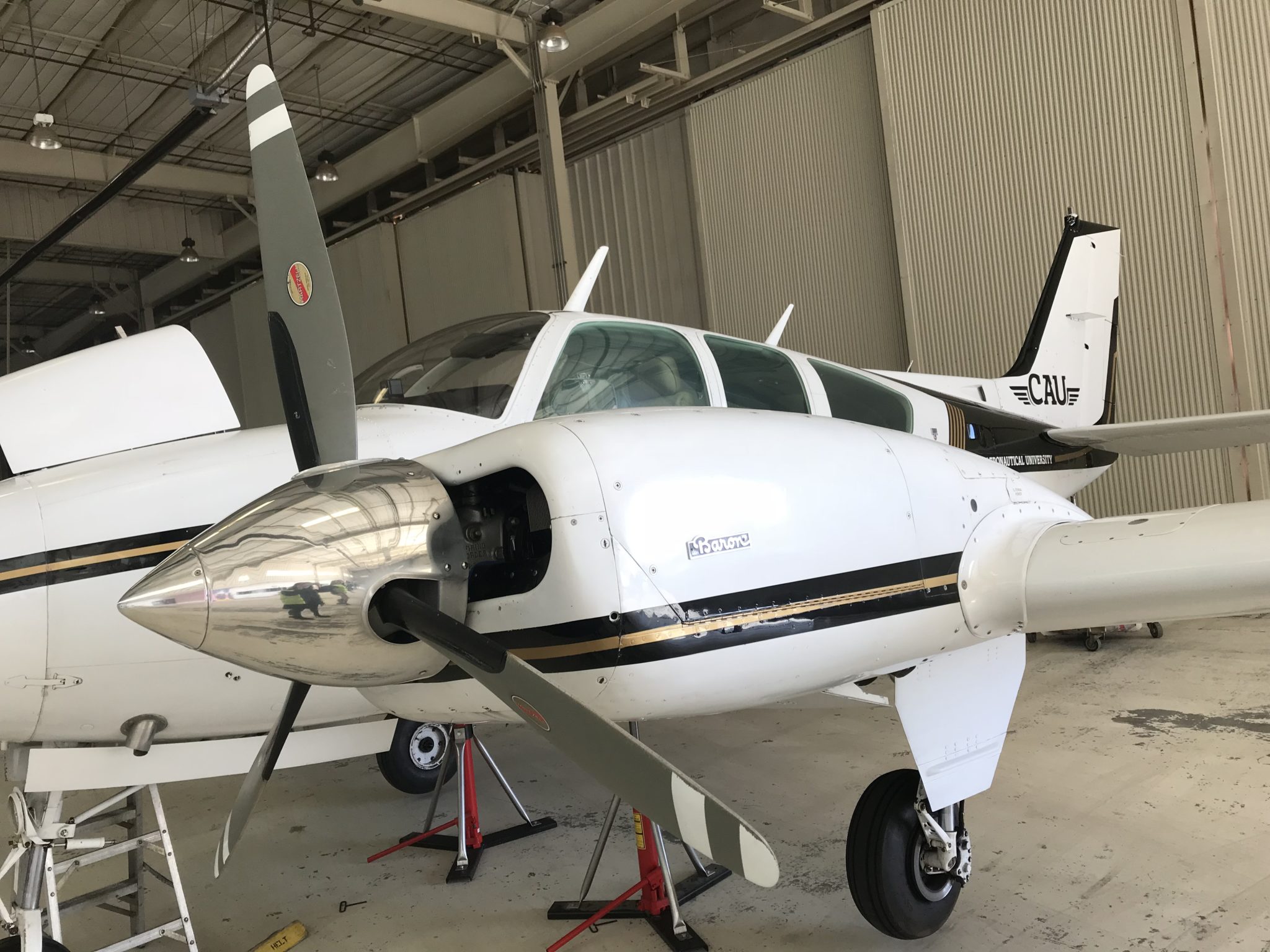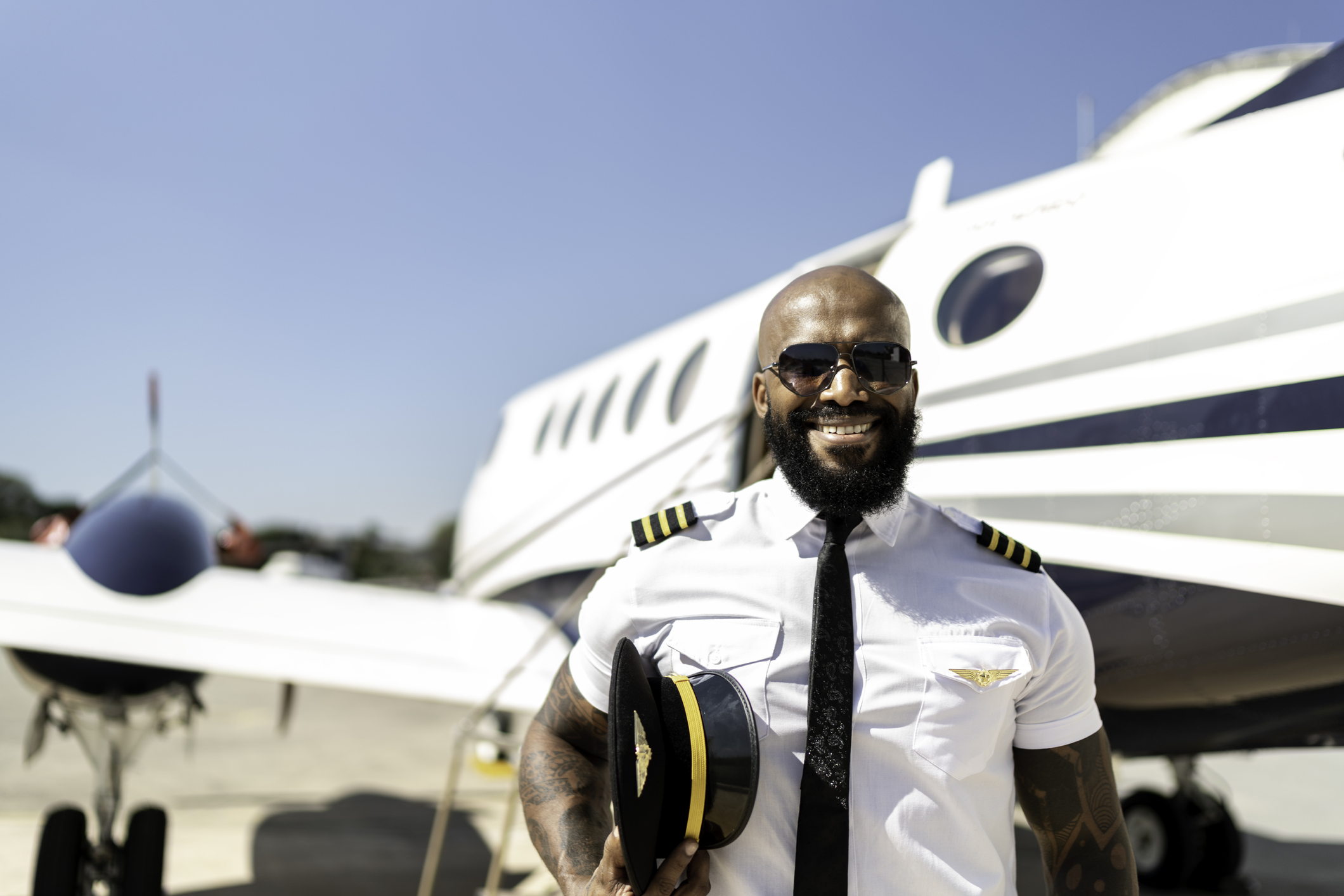To advance your career as a pilot for pay, it’s imperative to get your multi engine training. Here’s why it is important, and what you need to know about this rating.
[lwptoc]
If a pilot has decided to progress in his or her training to flying twin-engine, more complex aircraft and is considering making a career in the cockpit, multi engine training is an important part of the process. Those who seek to become airline pilots or fly aircraft larger than single-engine models usually begin to train for “the multi” after completing their private pilot certificate, their instrument rating, commercial certificate, and, sometimes, their Certified Flight Instructor training. Pilots must complete a commercial certificate in both single and multi-engine airplanes if they are seeking to fly for pay.
While it is possible to earn a private pilot certificate in a multi-engine aircraft, this is rarely the case. As one CFI says, “That’s like learning to drive in a Ferrari”. It’s a lot of power, understanding of airmanship, and comprehension of the forces of flight to take on at once. Should one of the engines on a twin engine aircraft fail, it can be difficult to land safely.
By the hour, it is more expensive to train in a multi-engine aircraft than in a single-engine one, although not as much flight time is required if the pilot is experienced. The majority of pilots studying for a multi-engine rating, then, have at least some experience as a private pilot already, and might already be flying for pay. Earning a multi engine rating is an important next step in opening career paths.
What Are the Qualifications to Begin Multi Engine Training?
Pilots who are already holding a private and commercial certificate should already have completed some of the qualifications. If not, they must become private pilots first, although they may do so in a multi-engine aircraft. They are then expected only to complete the training required in a multi-engine aircraft by the Federal Aviation Administration (FAA.) A candidate for the multi must be at least 17 years old, hold an appropriate medical certificate, demonstrate the ability to perform math calculations, and establish that he or she can read, speak, understand, and write the English language. They must also either prove American citizenship or hold a TSA card.
Some might be surprised to learn that an FAA knowledge (written) exam is required to earn the multi-engine rating as an add-on. Pilots must demonstrate this knowledge on the practical test, most often referred to as “the check ride.” In addition, the FAA does not establish a minimum time requirement before the candidate may take the exam with a pilot examiner, although his or her flight instructor must provide an endorsement. Some simulator flying is permitted, and most pilots receive their logbook endorsement after ten to fifteen hours of cockpit training.
What Do Multi-Engine Candidates Need to Know?
The irony of multi engine training is that candidates spend much of their time practicing how to fly with only one engine. This emergency drastically affects an aircraft’s center of gravity, power, drag, and ability to avoid stalling. Pilots must learn how to maintain control of the aircraft under stressful circumstances. Rehearsal of how to calmly react to emergency procedures is an integral part of multi engine training.
Concepts covered by multi engine training include learning how to work with more power, speed, and performance. Multi-engine candidates must demonstrate fine control of these powerful aircraft. Flight instructors must concentrate on teaching the student about the limitations of the aircraft, as well as how its systems work. Students also learn how to pull out of spins, fly instrument approaches, and maneuver in flight.
Learning about good judgement in all situations is also an important part of completing multi engine training. Flying a multi-engine aircraft, even a light one, demands more complex flight training and intricate decision making. Students must understand how to work with the increased power of the aircraft, as well as its weight.
These factors affect the ability to take off and land; in fact, certain airports with shorter runways no longer become an option for pilots flying multi-engine aircraft, because there is not enough room for a safe procedure. While multi-engine airplanes can carry more people and cargo, the tradeoff is the necessity to consider weight issues more carefully, particularly in warmer weather. In addition, having two engines drastically changes fuel calculations.
Why Is It Beneficial?
“Getting the multi” carries many benefits with it. Since most students who train for the multi-engine rating are already commercial pilots with an instrument rating, becoming a commercial multi-engine pilot opens a multitude of doors for career advancement. It is a must for those hoping to join the airline world, either with a major line or at a regional outfit. Many charter, corporate, and fractional operations demand a multi-engine rating. Students should be aware, however, that most insurance companies stipulate that job applicants should have a certain number of hours as pilot in command (PIC) in a multi-engine aircraft.
Pilots who fly for their own enjoyment or to ferry themselves to business appointments should consider the multi-engine rating because such aircraft, given their increased power, fly much faster than single-engines. While this can mean an increased fuel bill, it also means fewer stops along the way for rest or refueling, as well as more time to attend to the task at hand instead of droning along at single-engine speeds.
Multi-engine aircraft can also carry more weight than their less powerful counterparts. This means that more friends and family can come along for the ride, as well as increased cargo. If you’re tired of carefully considering luggage amounts down to the last ounce, stepping up to a multi-engine aircraft means that you can take that extra bag without any worries—plus some souvenirs on the way back home.
Pilots who have already invested time, resources, and energy into a commercial certificate and instrument rating would do well to consider joining the multi-engine family. The reduced flight time required to complete the rating, combined with the knowledge and experience the adventure will bring, makes taking the leap more than worth it.
Ready to soar in your aviation career?
Mr. Matthew A. Johnston has over 23 years of experience serving various roles in education and is currently serving as the President of California Aeronautical University. He maintains memberships and is a supporting participant with several aviation promoting and advocacy associations including University Aviation Association (UAA), Regional Airline Association (RAA), AOPA, NBAA, and EAA with the Young Eagles program. He is proud of his collaboration with airlines, aviation businesses and individual aviation professionals who are working with him to develop California Aeronautical University as a leader in educating aviation professionals.

